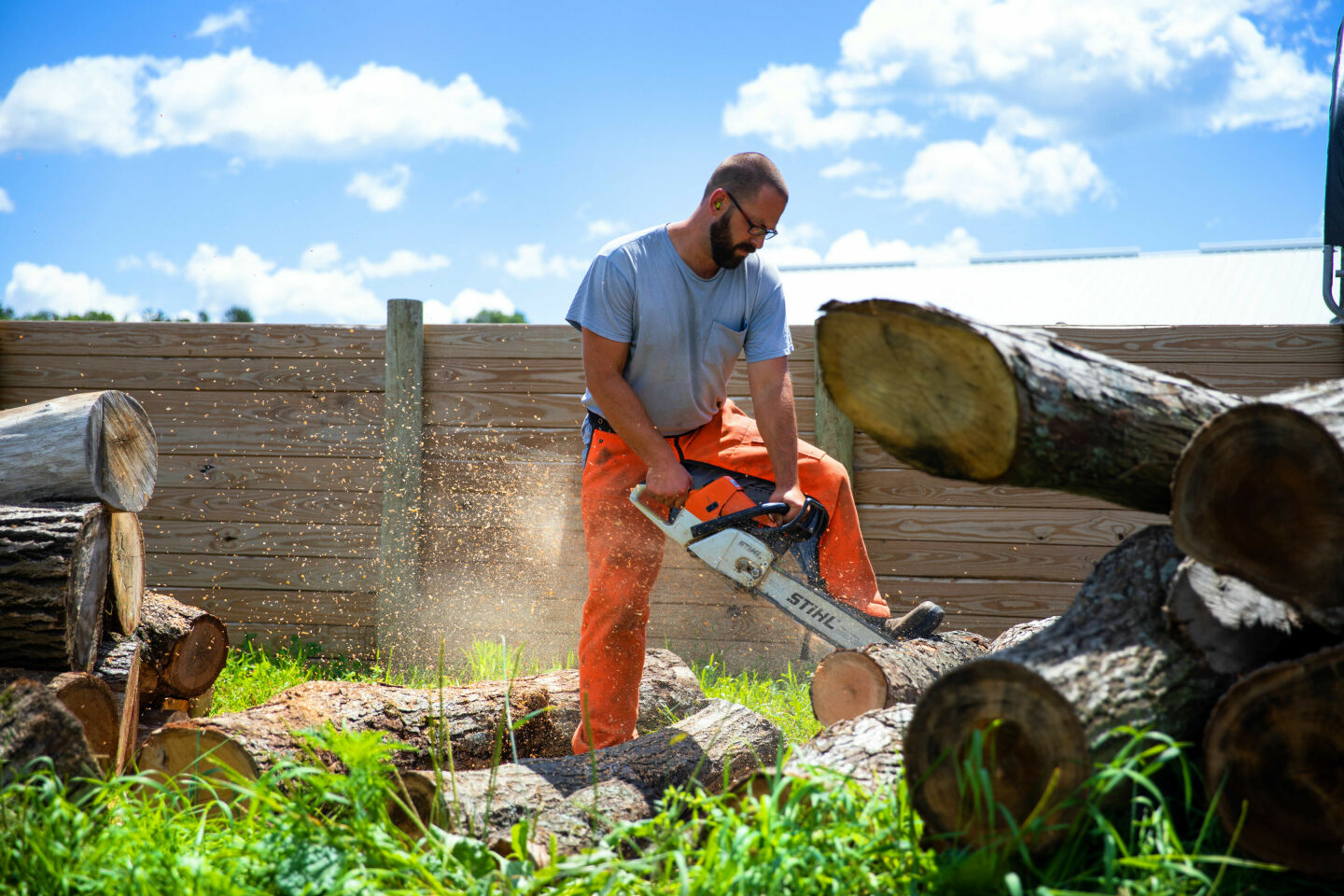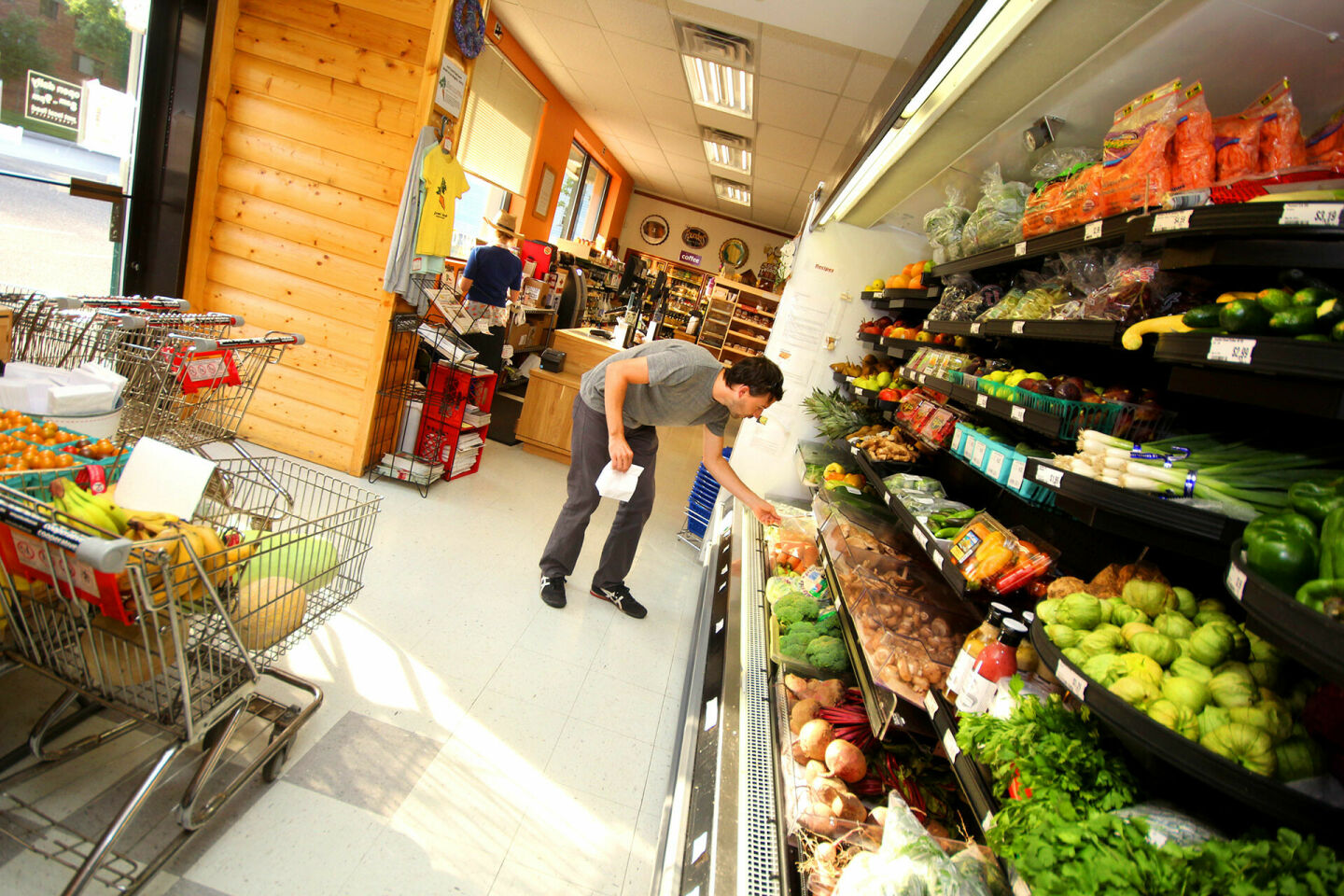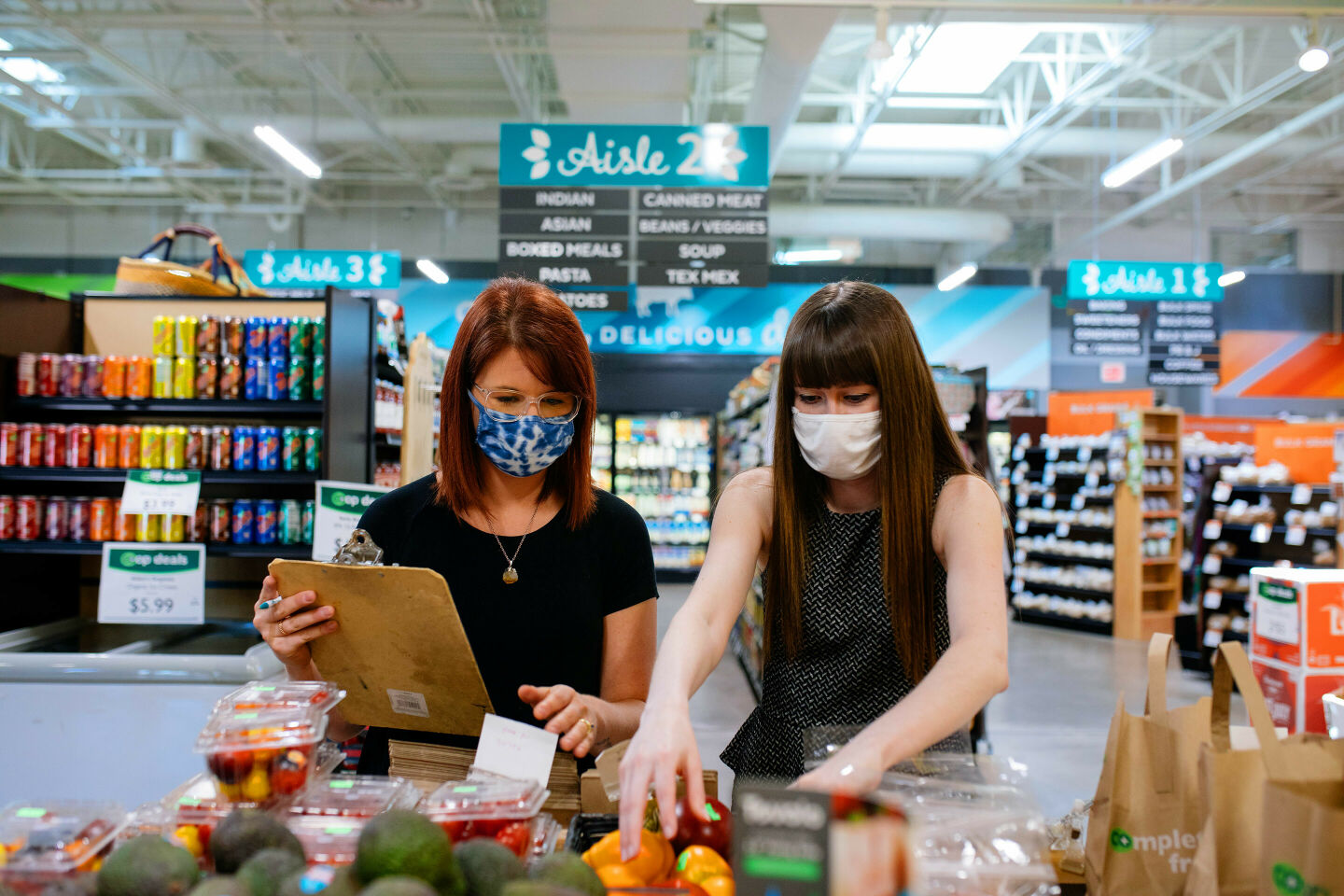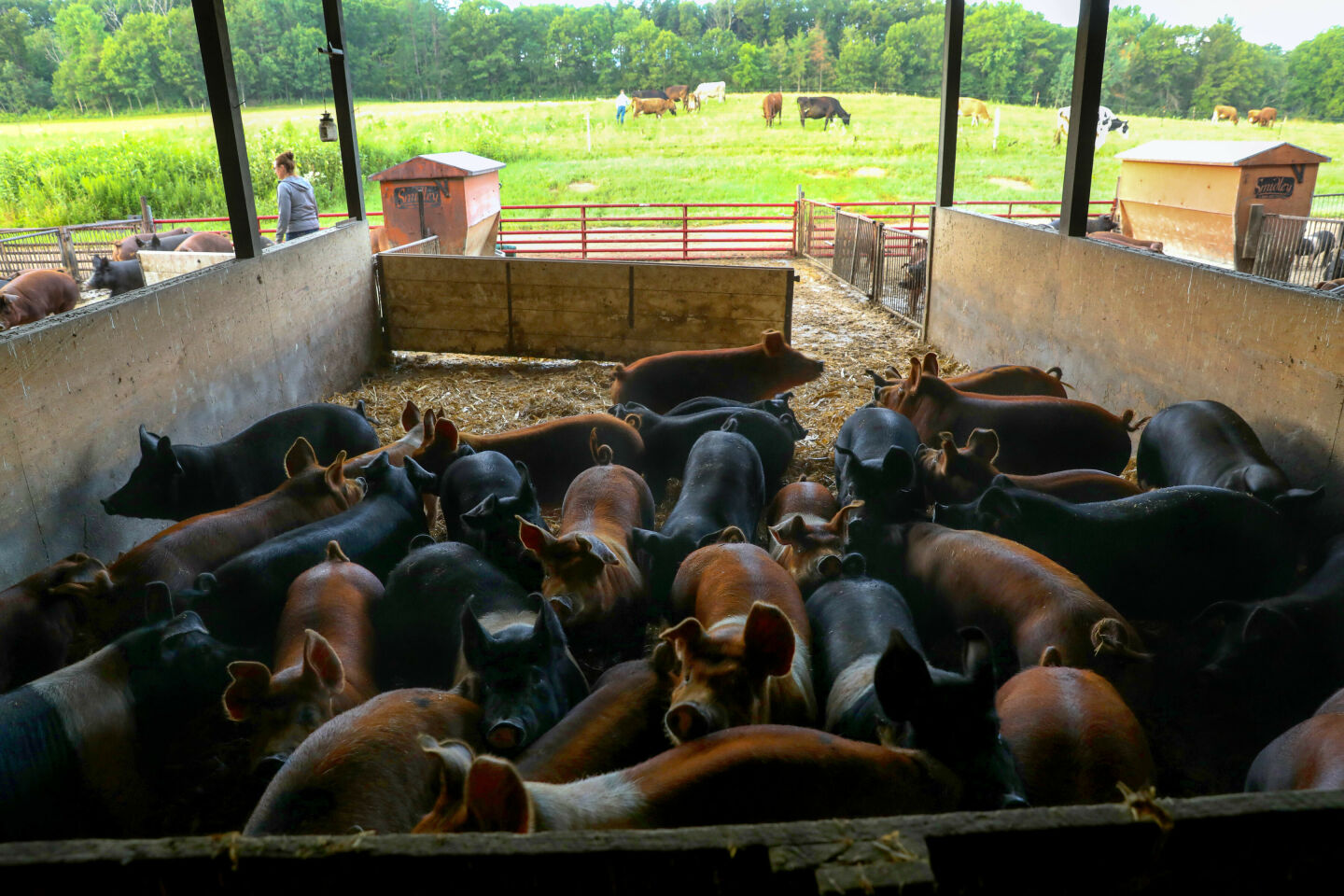
As outbreaks of COVID-19 continue to spread across the Chippewa Valley, local farmers, co-op managers, small producers, and growers continue to see the global food system as broken — though they affirm we have the power to change it. It’s all in our hands.
Outbroken: A Pandemic’s Effect on Wisconsin’s Food and Farms
Documentary Short Film [8:29]
Association of Alternative Newsmedia
Best Multimedia Project
Milwaukee Press Club
Best Pandemic Story in Print (Gold)
Best Pandemic Story in Video (Gold)
Best Use of Multimedia (Gold)
Local Media Association Awards
2021 Best Digital News Project
• • •
“Where are we, and why are we here?” Nik Novak, the storekeeper and meat buyer at Just Local Food Cooperative in Eau Claire pondered — completely at ease at Deutsch Family Farm in Osseo, Wisconsin. “In a sense, we are where we’ve always been… We’re trying to provide the best quality food to all of our people, our workers, our customers, and our farmers. And we’ve built lots of long-standing relationships over these years, and all of that is being tested right now by our new reality, the ‘COVID commotion,’ as we like to call it."
Novak continued, “And it’s putting pressure on global systems, which is putting pressure on regional systems, and that’s putting pressure on local systems, and that’s where we come in: When everything starts to break down, you still have the people — the relationships — in your neighborhoods, in your communities.”

Novak is one of hundreds — thousands — of Wisconsin farmers, co-op managers, small producers, and growers who have been hit particularly hard by the COVID-19 pandemic. As disease spreads, rickety fluctuation in food supply and demand stresses the rural food system. Panicked customers seek short-term solutions to long-term issues. Decreased foot traffic at local markets forces market vendors to scramble for other options. Long-standing agricultural monopolies continue to threaten the local food system.
This is one story of how, in many ways, the food system has been broken for a long time, but the COVID-19 outbreak may be the end for Wisconsin’s mom-and-pop farms — or the opportunity to pivot and allow small-town farmers to do what they do best: grow. It's a choice that is all in the hands of our community right here in the Chippewa Valley.
Restaurant
Closures
In late September, U.S. Sen. Tammy Baldwin co-sponsored the Real Economic Support That Acknowledges Unique Restaurant Assistance Needed To Survive (RESTAURANT) Act, which would create a $120 billion revitalization fund to help the restaurant industry overcome long-term financial challenges resulting from the pandemic.
Since the pandemic began, the restaurant industry has lost more revenue and jobs than any other industry, according to the bill. The Bureau of Labor Statistics said the restaurant industry currently faces an unemployment rate of 21%, with 6.1 million people currently unemployed. The Chippewa Valley is no different.
“We’re no longer in emergency mode,” said Kent Buell, Food and Beverage Director for Pablo Group, which manages popular Eau Claire restaurants such as The Informalist, The Fire House, Racy D’Lenes Coffee Lounge, The Nucleus, and Eau Claire Downtown Coffee (ECDC). “This is what we’ve had to deal with.”
According to Buell, the first question restaurant teams like Pablo Group had to consider was the safety of their teams. Next, was how to capture business safely — a challenging question as small restaurants limit social distancing capability and colder weather limit potential for outdoor dining. But Buell wasn’t able to speak about the impact of the pandemic on restaurants without touching on the impact COVID-19 has had on every other aspect of the food system in the Chippewa Valley — the systems are so intertwined that the impact on one causes a domino effect on the others.

When restaurants closed in early March, many local farmers had no place to directly sell their food, Buell said. And, with meat butchers seeing an influx of appointments due to increased demand for meat, many local farmers weren’t able to get their animals processed, resulting in rotting food and animals they could no longer use for profitable meat. Buell said he knew one local farmer who worked with about 125 farms and, as a result of the pandemic, now works with fewer than four.
The food waste — despite rates of food insecurity rising in the U.S. — weighs heavily on Buell’s mind.
“It’s about small, daily choices … In terms of the food chain, we have almost everything we need locally.”
It’s one of the many reasons he supports local — and continues to value supporting local during a pandemic.
“It’s about (being) intentional, and moving a little bit away from convenience,” he said. “It’s about small, daily choices… In terms of the food chain, we have almost everything we need locally. It’s learning to eat from the Valley.” One program that supports this is the Pablo Food Hub, which Pablo Group launched after seeing a need for local food in the community.
And, it’s about more than just supporting locally. It’s about being a good neighbor, according to Rita Dorsey, general manager of The Lismore. Many employees in the restaurant industry are faced with the danger of going to work every day and getting sick or not being able to pay rent or afford groceries, she said, which is one of the many reasons she and her team place such value on safety in The Lismore.
“It’s such a hard position for them to be (in),” she said. Dorsey said many people don’t respect mask policies and berate employees — many of which make only slightly more than minimum wage.
Both Buell and Dorsey see the pandemic as ripping a bandaid off an already-delicate system that was on the brink of collapse. But, valuing neighbors and local food may be the solution to solving the issues that are eminent in the rural food system — and it’s an obvious solution, Buell said. Fresh, local foods taste better and the cost is almost the same as the big box stores’ prices, he said. If local communities make small substitutions — starting with little things like honey from local beekeepers and eggs from local farmers, eventually it will add up in a big way.
“I see us on the cusp of some amazing things to come,” Buell said.
Co-op
Demand
Local food co-ops have seen a surge in demand and foot traffic since March, reaffirming what many managers know to be true: supporting local is the best way to collectively endure crises.
The first two months after the pandemic hit northwestern Wisconsin, meat sales increased at Just Local Food Cooperative in Eau Claire by 77%, according to Novak, the storekeeper. Total store sales initially surged by 38%, and are now consistently 20 to 25% higher than what they normally would be.

The Menomonie Market Food Co-Op also noticed a skyrocketing demand for produce, frozen meats, and frozen foods, which may be due to more people cooking from home as a result of restaurant closures. Local dairy farmers took a sharp hit, according to the co-op, as many were forced to dump their excess milk.
It’s a trend the National Farmers Union affirms with the startling statistic:
Wisconsin has lost 2.5 dairy farms each day over the last year — losing 773 dairy heards as of 2019 — and thus our retail dollars are increasingly going to large corporations rather than family farms.
According to the Midwest Farm Report, at the peak of the pandemic:
About 110 Wisconsin farms were forced to dump milk – totalling more than 600,000 gallons – as a result of oversupply.
The oversupply, according to the Milwaukee Journal Sentinel, was largely because of restaurant closures:
More than half of Wisconsin’s milk goes into food service, and those types of sales have dropped 70% amid the pandemic.
Yet farmers still pay the price.Co-ops help mitigate that damage. Smaller producers have a hard time getting the product on the shelf at bigger stores, so the co-op acts as a “year-round farmer’s market,” said Marketing Manager Kendall Williams. Co-ops serve as a place to sell these goods and connect consumers with the folks raising and growing their food.
According to National Farmers Union data, 14.6 cents out of every retail food dollar goes to the farmer. Thirty years ago, a farmer received 37 cents out of every retail food dollar.

At Just Local Food Cooperative, the farmer receives two-thirds of a dollar, and the co-op retains the leftover funds to pay its employees and operating costs, which keeps money in the community.
Co-ops also have the beneficial “multiplier effect” according to Becca Schoenborn, the outreach and education coordinator at the Menomonie Market Food Co-Op: For every $1,000 spent at a local co-op, $1,600 is generated in the local economy. “We are able to pay the people who live here,” she said.
















